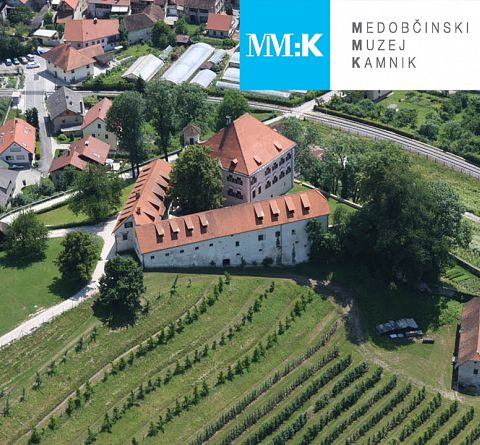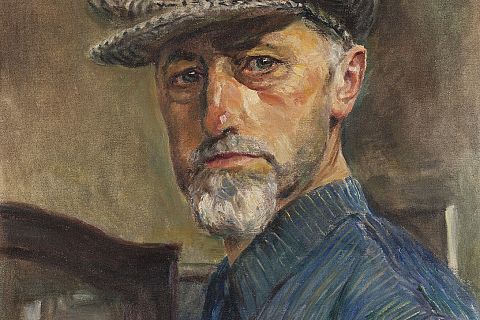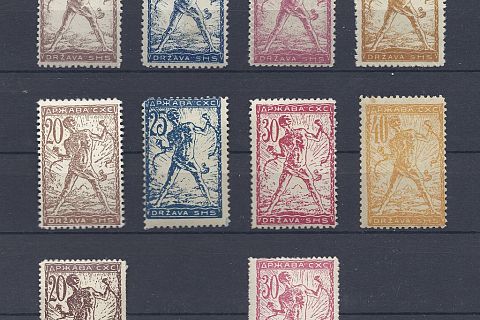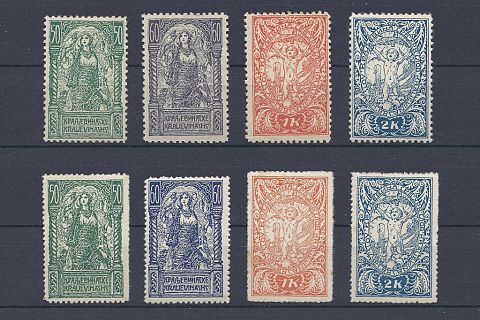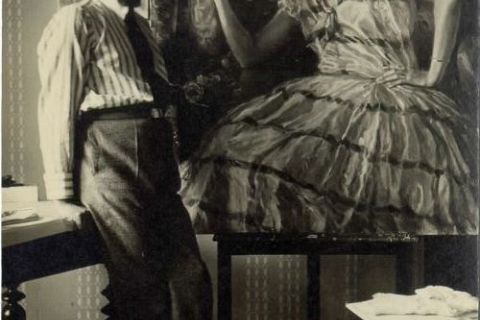Painter Ivan Vavpotič and the first Slovenian mark Verigar
Slovenian realist painter Ivan Vavpotič also directed his artistic design to create the first Slovenian mark. Chainsaws are the first Slovenian marks for which the artist mentioned at the end of 1918 contributed sketches. They were printed in Ljubljana and Vienna. In 1919 and 1920 they were in regular use in Slovenia, Croatia, Bosnia and Herzegovina and Vojvodina. Chainsaws differ from other brands in their diversity, because brands with the same face value and the same motif in detail can be very different. Such a wide variety of the marks is largely due to the general shortage at the time. Namely, there was a lack of paper and colour when they are printing these marks, the printing machines used were many times already used, and the printing experience was often lacking. The great branding needs at the time also helped to diversify and therefore rush to print.
Verigar’s basic collection includes 100 brands of various motifs. Of these, the most famous is the slave who breaks the chain – hence the name for the entire series of stamps. In addition to this topic, there are others, including a bride with a falcon and an angel. The first marks in this series show the designation ‘State of the Serbs, Croats and Slovenes’, which initially represented the State of Slovenes, Croats and Serbs, and in the later marks the designation ‘Kingdom of the Serbs, Croats and Slovenes’.
Ivan Vavpotič was born on February 21, 1877 in Kamnik. He attended gymnasium in 1888-1897 in Novo mesto, where he also attended a course of hands-free drawing in addition to the regular program. After graduating he went to Prague, enrolled first at the Conservatory, but soon enrolled at the Royal State Academy, where he studied painting and figural composition at V. Brožík and V. Hynais, and the landscape with J. Mařák and M. Pirner. Between 1900 and 1902, he pursued his studies in Paris (École de Louvre, Prof. B. Constant and École des Beaux Arts) and, in the course of the year, also in Vienna. He graduated in Prague in 1905, where he became a teacher of drawing and art history at Strak’s Academy, and continued his studies at Hynais. In 1906, he returned to his homeland and until 1910, he taught hands-free drawing on a gymnasium in Idrija. In the period 1910-15, he lived in Ljubljana as a freelance artist, and in 1915 he held an office exam in Graz and until 1918 at the Military Press Office (as a painter on the battlefields and in the hinterland). At the end of the war, in 1926-29, he led the stage design workshop of the Ljubljana Drama and Opera, and then until his death he acted as a freelance artist. He was one of the main initiators and associates of professional associations in Ljubljana, the organizer of the exhibitions, and he was among the initiators and founders of the Lada II and DSLU society, and he worked to improve the material and moral situation of artists. He died in 1943 in Ljubljana.
Vavpotič’s opus is extremely extensive and includes oils, drawings, sketches, percolations, watercolours, pastels, tempers, motifs and figural compositions, portraits, landscapes and still-life. He made initials, vignettes, ornamental covers and other fine prints for book and magazine printing, book illustrations, drawings for occasional purposes, cartoons, posters for theatre performances, permanent adhesives for the Ljubljana fair etc.
Saša Bučan



